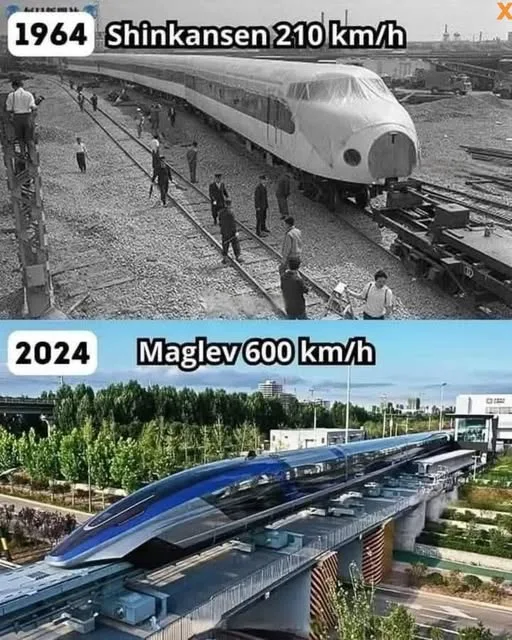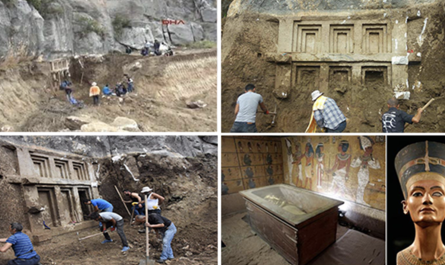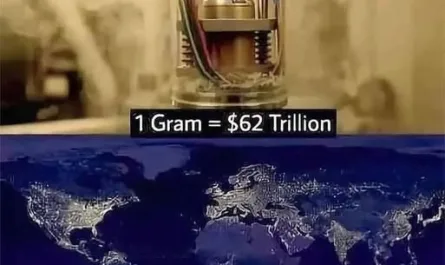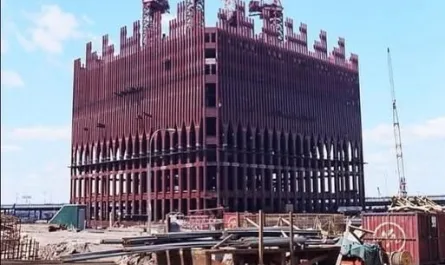The Dawn of the Shinkansen: A Game-Changer in 1964
In October 1964, Japan unveiled a marvel that would redefine modern transportation: the Shinkansen, the world’s first bullet train. Launched on the Tokaido line connecting Tokyo and Osaka, it was a bold leap forward, designed to meet the demands of Japan’s booming post-war economy and growing urban centers. With a top speed of 210 km/h (130 mph), the Shinkansen slashed travel time between these two cities from nearly seven hours to just four. This wasn’t just a train—it was a symbol of Japan’s technological ambition and a blueprint for the future of rail travel.
The Shinkansen’s success wasn’t solely about speed. Its engineering was revolutionary: aerodynamic design, dedicated tracks to eliminate collisions with slower trains, and an automated train control system that ensured pinpoint precision. Safety was paramount—Japan’s earthquake-prone geography demanded it. The Shinkansen incorporated early earthquake detection systems, halting trains within seconds of seismic activity. Since its debut, it has maintained an impeccable safety record, with zero passenger fatalities due to collisions or derailments in over six decades.

The Global Ripple Effect
The Shinkansen’s impact was immediate and global. It inspired a wave of high-speed rail (HSR) development across the world. France introduced the TGV in 1981, reaching speeds of 260 km/h, followed by Germany’s ICE and Spain’s AVE. China, a latecomer, exploded onto the scene in the 2000s, building the world’s largest HSR network—over 40,000 km by 2025—connecting megacities like Beijing and Shanghai with trains like the CRH380, capable of 350 km/h.
Each country adapted HSR to its needs. France prioritized speed and connectivity across Europe, while China focused on scale, linking vast regions to fuel economic growth. Japan, meanwhile, continued refining the Shinkansen, with models like the E5 and N700S series hitting 320 km/h by the 2010s, blending speed with unmatched reliability (average delays are under a minute).
The Maglev Revolution: Defying Friction
While conventional HSR pushed the limits of wheel-on-rail technology, magnetic levitation (Maglev) trains took innovation to another level. By using powerful magnets to levitate trains above tracks, Maglev eliminates friction, enabling staggering speeds and smoother rides. Japan and China have led this charge.
Japan’s L0 Series Maglev, developed by Central Japan Railway (JR Central), has clocked 603 km/h in test runs, though commercial speeds are capped at 505 km/h for safety and efficiency. The Chuo Shinkansen, a Maglev line under construction, will connect Tokyo and Nagoya by 2027 and Osaka by 2037, shrinking the 438-km Tokyo-Osaka journey to just 67 minutes. This is a game-changer for a nation where air travel dominates long-distance routes.
China’s Shanghai Maglev, operational since 2004, holds the title of the world’s first commercial Maglev, with a top speed of 431 km/h. Covering 30 km in just 7 minutes, it’s a showcase of China’s ambition to dominate next-gen transport. Plans for a Beijing-Shanghai Maglev line, potentially operational by the 2030s, aim to cut travel time between these cities to under two hours, compared to five hours by current HSR.
Why Maglev Matters
Maglev’s appeal goes beyond speed. Without physical contact between train and track, maintenance costs for tracks are lower, and the ride is quieter and smoother. Energy efficiency is another win—Maglev trains consume less energy per passenger-kilometer than airplanes and even some conventional HSR, making them a greener option for long-distance travel. For example, Japan’s L0 Maglev uses about 20% less energy per seat than the Shinkansen at comparable speeds.
But Maglev isn’t perfect. The upfront costs are astronomical—Japan’s Chuo Shinkansen is projected to cost $90 billion, largely due to the need for entirely new infrastructure. Conventional HSR, which can often use upgraded existing tracks, remains more cost-effective and versatile, explaining its dominance in Europe and China. Maglev also faces geographic limits; its dedicated tracks aren’t interoperable with standard rail networks, restricting its flexibility.
The Future of High-Speed Rail
The evolution of HSR doesn’t stop with Maglev. Emerging technologies are poised to push boundaries further:
-
Hyperloop: Concepts like Elon Musk’s Hyperloop propose near-supersonic travel in vacuum tubes, potentially reaching 1,200 km/h. While still in early testing (e.g., Virgin Hyperloop’s 2020 trials), scalability and cost remain hurdles.
-
AI and Automation: AI-driven systems are optimizing train scheduling, predictive maintenance, and energy use. China’s HSR already uses AI to manage traffic on its massive network, reducing delays and boosting capacity.
-
Sustainability: Advances in lightweight materials and renewable energy integration are making HSR even greener. Germany’s ICE trains, for instance, are increasingly powered by wind and solar energy.
Challenges and Opportunities
Despite its promise, HSR faces challenges. In developed nations, political resistance and high costs often stall projects—look at California’s HSR, plagued by delays and budget overruns. In developing regions, funding and expertise gaps limit adoption. Yet, the global push for decarbonization is a tailwind. HSR emits a fraction of the CO2 of air or car travel, making it a cornerstone of sustainable transport policy in places like the EU and China.
By 2050, expect HSR and Maglev to coexist, with conventional rail serving dense, shorter routes and Maglev tackling high-demand, long-distance corridors. Japan and China will likely remain leaders, but India’s planned HSR (modeled on the Shinkansen) and Europe’s expanding cross-border networks show the technology’s global reach.
Conclusion
From the Shinkansen’s debut in 1964 to today’s Maglev marvels, high-speed rail has transformed how we move. It’s not just about getting from A to B faster—it’s about efficiency, safety, and sustainability. As technology advances and climate pressures mount, HSR and Maglev will play a pivotal role in shaping a future where speed doesn’t come at the planet’s expense. Whether it’s a 67-minute dash between Tokyo and Osaka or a transcontinental Maglev network, the journey is just beginning.





